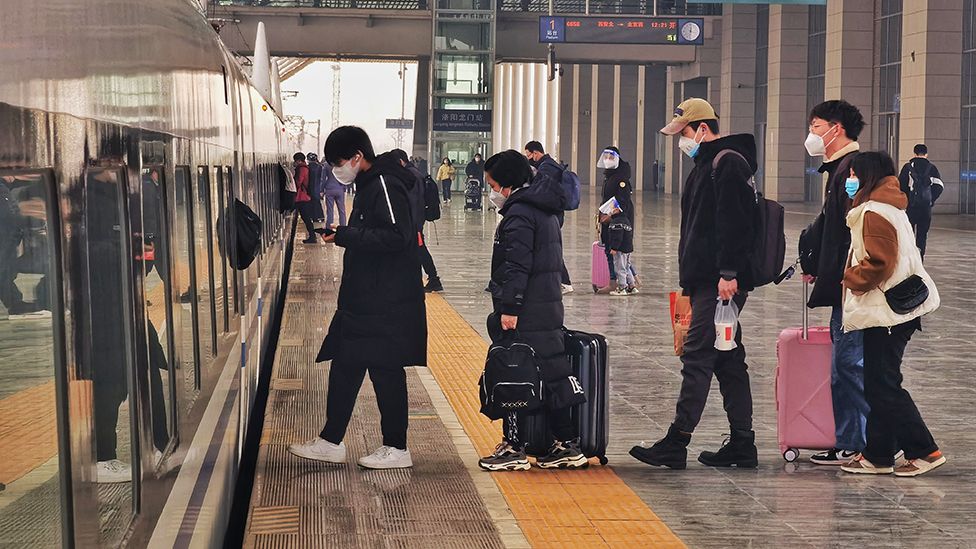China Again Exporting COVID Abroad
 |
| Local Covid data is in stark contrast to that from central government Getty Images |
"Life is moving forward again!""[The government’s virus policies moved from] preventing infection [to] preventing severe disease.""Today, the virus is weak, we are stronger."People's Daily, official newspaper of the CCP"As of January 6, 2023, the province's COVID infection rate is 89.0 per cent.""[Visits to fever clinics peaked on December 19], after which it showed a continuous downward trend."Kan Quancheng, director, health commission, central Henan province

SARS-CoV-2, the virus responsible for causing COVID-19 has returned to China with a ferocious roar of triumph following the relaxation of President Xi Jinping's 'zero-COVID' policy that locked China into a series of dystopian isolation clamping entire cities of millions of residents into strict lockdown conditions, pausing industry to the extent of crippling the Chinese economy and its massive trade worldwide impacting on deliverables of goods globally.
China's vast population of inadequately vaccinated people combined with constant testing and lockdowns left ample inroads for Omicron variants, the most transmissible of the pandemic's three-year-course, to run rampant through China's relatively unprotected population. Too few residents were inoculated, and the vaccines produced in China, lacking the efficacy of Western counterparts left a population vulnerable to massive infection rates.
China's most populous province now has an infection rate of 90 percent since the lifting of restrictions, according to official figures. Central Henan province's director of the health commission confirmed that as of several days earlier the COVID infection rate to be 98.0 percent. Translated that means that roughly 88.5 million of its 99.4 million population have the viral infection in the pandemic's largest surge sp far. It is a guarantee that those who have somehow managed to evade infection, will now join the ranks of the infected.
 |
Despite the lifting of quarantines and mass testing following nationwide protests of citizens completely fed up with their constrained, artificially difficult life imposed by Beijing's zero-COVID policy, China's closed-border policy has also been reversed. China, it may be recalled, made no effort to restrain its population from going abroad when COVID was first detected and began spreading first in Wuhan a city of millions, but it did close the province and the city from its residents travelling to other parts of China.
And when the world outside China, concerned over a rapidly spreading infection with serious consequences for many that would soon enough be identified as a pandemic by the WHO, decided (belatedly) to close their borders to Chinese visitors, Beijing slammed the outside world as 'racist' for keeping Chinese citizens out of their borders. Still, viruses don't recognize borders and it took little time before Europe was inundated by a flood of COVID infections, shocking health authorities and flooding ill-equipped hospitals with ICU patients.
Chinese citizens, seemingly oblivious to what they would be carrying as viral baggage with them, are anxious to travel, their first opportunity since early 2020. Worldwide fears of new variants leaving China to sweep through the world at large persuaded other countries to once again begin requiring tests for incoming visitors from China, leaving Beijing once again fuming over 'racist' behaviour on the part of Europe, East Asia and North America.
China in retaliation has now refused to give visas to citizens from Japan and South Korea who may wish to visit China. China has much to be concerned about. Its huge rural residents are next in line to suffer the inundation of infection that surged through China's immensely populated metropolisis. In the urban areas, there are signals that the surge is abating, while it is only now gaining strength in rural areas with their less formal health care systems preparing to be overwhelmed.
Millions of migrant workers have left cities to travel home for the Lunar New Year holiday, despite recommendations from authorities that they remain in the cities. A cultural tradition of immense importance to Chinese, the annual migration back home to celebrate the Lunar New Year is sacrosanct. "What we are most worried about is that after three years, everyone ... can finally go home for the new year to visit relatives", stated Jiao Yahui, an official with China's National Health Commission. The rural wave, he said would represent a "huge challenge".
The Chinese are eager to renew their passports, to begin travelling again. Travel bookings appeal to vast numbers of Chinese eager to get away. Direct flights from South Korea to China, on the other hand, quickly sold out. But since South Korea was among those countries reintroducing antivurus measures inclusive of arrivals from China required to produce a negative COVID test result, Beijing is withholding visas.
| Hundreds of thousands of people have already booked passage from mainland China to Hong Kong. (AP: BerthaWong) |
Labels: Beijing, Lifting Zero COVID, Rapid Infections, Travel Restrictions Lifted, Wholesale COVID Nationwide

<< Home